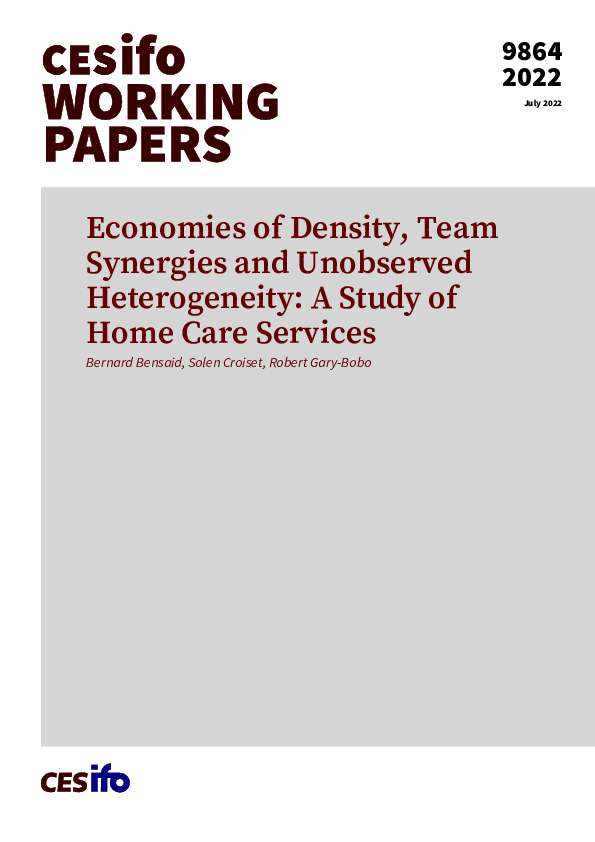Economies of Density, Team Synergies and Unobserved Heterogeneity: A Study of Home Care Services
CESifo, Munich, 2022
CESifo Working Paper No. 9864

In the home-care services industry, caregivers drive to visit patients scattered in a district and deliver various care services at the patient’s home. We use a unique data set, with a standard panel structure, recording the hours of service and the exact number of miles traveled by each employee. The estimated average transportation cost curves, giving the ratio of miles traveled per hour of service, as a function of hours of service at the patient’s home, typically exhibit economies of density. These results suggest that the home-care sector is characterized by excess entry and that a form of franchise-bidding regulation could be appropriate. We study the unobserved heterogeneity of employees and use a quadratic-inlogs, finite-mixture model with latent groups to uncover a finite number of employee types with different cost curves. Some types, but not all, have U-shaped average cost curves yielding an aggregate average transportation cost that is itself U-shaped. Economies of density are mainly due to team synergies operating at the district level. We also show that our model can be interpreted as a test of organizational efficiency based on the Beardwood-Halton-Hammersley (1959) theorem of combinatorial optimization.
Public Finance
Industrial Organisation